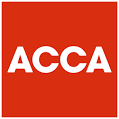SMEs suffering from late payments often find themselves facing huge tax bills, forcing them to dip into their cash reserves.
Here are 5 tips for SMEs to combat a cash flow crisis: –
- Streamlining business expenses
The world is being transformed by the digital revolution, and so too is the accounting industry. Embracing the digital transformation is simply inevitable even though the governments’ Making Tax Digital timetable has been pushed back.
Many SMEs still rely on spreadsheets and other inefficient manual processes to manage their business expenses, costing approximately £8.72 billion each year in lost productivity.
Businesses should consider investing in automated systems and cloud-based solutions which improves efficiency, makes it easier to track and control expenses, removes administrative burdens and frees up business time.
Companies should also make sure they are not missing out on tax deductible advantages by failing to claim for trading expenses incurred for business purposes, such as for equipment, accountancy fees and business travel.
- Claim for capital allowances
Businesses should ensure they are taking full advantage of tax relief opportunities.
Commercial property-owning businesses are entitled to claim capital allowances, a valuable form of tax relief for certain types of capital expenditure. This includes specialist plant and machinery, heating and air conditioning, security and communication systems and IT related investments, and other costs associated with building refurbishments.
Additionally, the annual investment allowance is a type of capital allowance that should not be neglected. It offers tax relief at 100% of expenditure and can enable businesses to write off the combined cost of certain assets against profits in the year of purchase – up to £200,00 until 2020. As it is a fixed amount, it is proportionally worth more for smaller businesses.
- Seek specialist financial support
To prevent late payments from causing a cash flow crisis, SMEs could spread the cost of their tax liabilities over a period of time.
Specialist external finance providers can provide tailored funding solutions to allow businesses to spread their costs, such as by stretching VAT bills over three to 12 months and self-assessment tax returns over six to 12 months.
Through gaining specialist support businesses can stabilise expenditure and more easily navigate peaks and troughs.
- Leverage R&D tax credits
Another way for SMEs to save substantial costs is through research & development (R&D) tax relief. This allows companies to reduce their tax bill by claiming payable cash credits as a proportion of their qualifying R&D expenditure.
Projects coming under the R&D umbrella include ones that seek to advance the overall knowledge or capability of a company in a field of science or technology.
Registered businesses that are investing in technological advancements in the form of products or services may qualify for R&D credits, even if the outcome of the venture is uncertain.
From April 2015, the scheme’s tax relief rates have risen to allow 230% tax relief on R&D costs.
It is estimated that £1bn in tax credits are currently going unclaimed annually – make sure your company isn’t missing out!
- Make use of the Apprenticeship Levy
This relatively new governmental initiative, launched in April, gives businesses the opportunity to hire apprentices and help existing employees expand their skillsets at a fraction of the usual cost.
The scheme requires employers with a pay bill of under £3m annually to pay 10% towards the apprenticeship levy – this constitutes 98% of companies in England. The government contributes the remaining 90%.
By utilising these methods, companies can stretch the cost of their liabilities and increase predictability and control over their business.
To find out how Broadwing Accountancy could benefit you and your company, contact Brian Munjanja on 01604 328328, or email your questions to [email protected].






